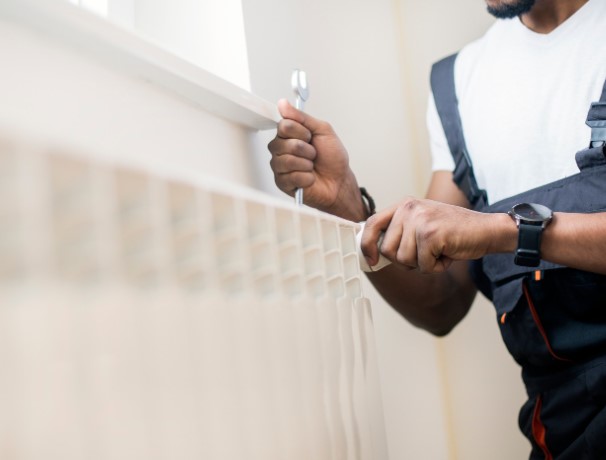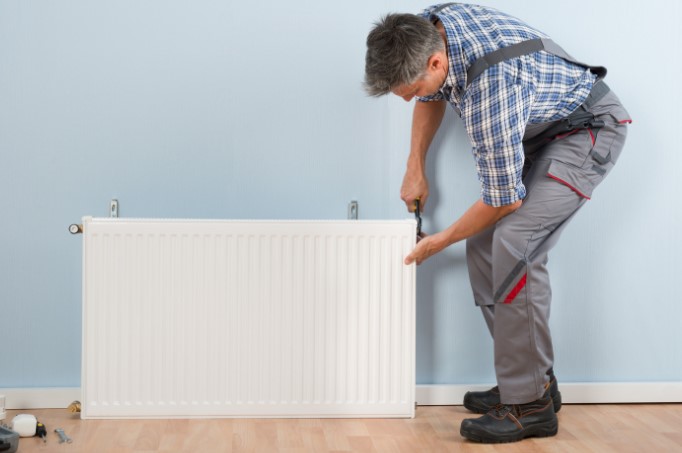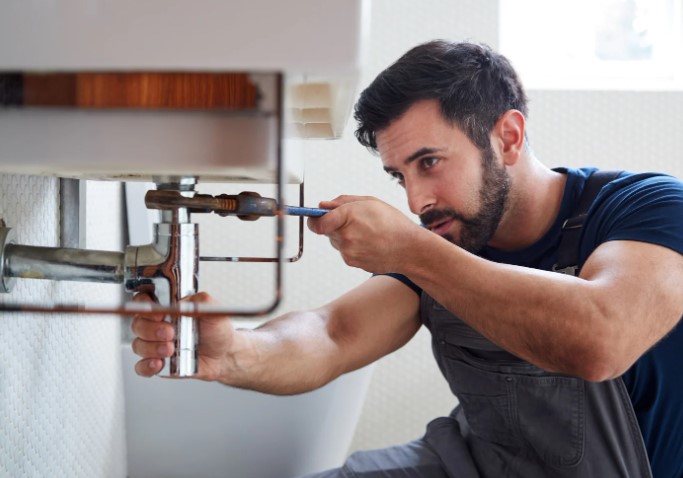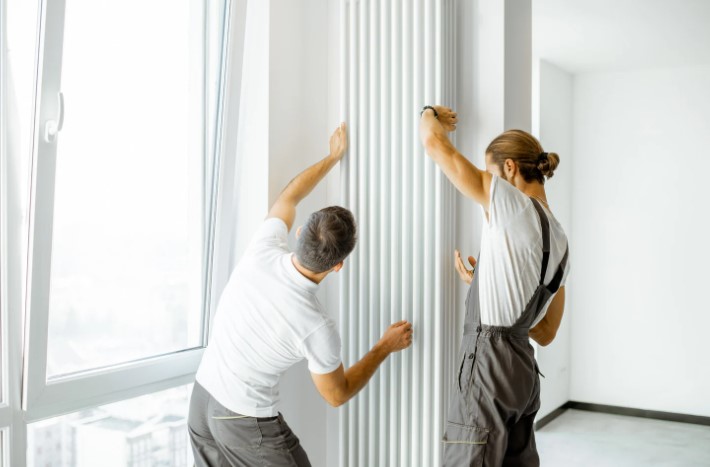- Why is My Radiator Hot at the Top but Cold at the Bottom?
- How Do I Know If Sludge Is the Problem?
- How Do I Fix a Radiator That’s Hot at the Top and Cold at the Bottom?
- Tools and Items I Use for Radiator Maintenance
- How Do I Prevent This Problem in the Future?
- Final Thoughts: Keeping Your Radiators in Top Condition
- Frequently Asked Questions (FAQs) On Radiator Hot at Top Cold at Bottom
Have you ever noticed your radiator hot at top cold at bottom?
I’ve run into this issue more than once in my own home, and it’s more than just a minor annoyance—it’s a sign that something’s not quite right with your central heating system.
In this blog, I’ll walk you through what causes it, how I diagnose it, and the steps I take to fix it properly.
Why is My Radiator Hot at the Top but Cold at the Bottom?
What does it mean when your radiator isn’t heating evenly?
When a radiator heats unevenly—hot at the top, cold at the bottom—it typically means the hot water isn’t circulating properly through the whole radiator.
The top heats up as hot water enters, but something prevents it from fully reaching the bottom.
How does a radiator normally heat up?
In a healthy system, hot water from your boiler flows evenly from the top inlet to the bottom of the radiator. This creates a consistent surface temperature across the unit.
If you feel cold spots—especially at the bottom—it’s time to investigate.
What causes the cold bottom of a radiator?
Sludge buildup from dirty water
Over time, metal particles, rust, and dirt accumulate inside radiators, forming sludge.
This thick, muddy substance settles down and restricts the flow of hot water.
Poor water circulation in the central heating system
If your central heating pump is underperforming or incorrectly balanced, water may not be pushed through all parts of the system equally.
This can leave some radiators with poor flow—especially at the bottom.
Radiator balancing or flow issues
If one radiator in your home gets hot quickly and others lag behind, your system might be out of balance.
The water prefers the path of least resistance, leaving some radiators under-supplied.

How Do I Know If Sludge Is the Problem?
Signs that indicate sludge buildup in your radiator
From my experience, these are the telltale signs:
- Radiator is hot at the top but stone-cold at the bottom
- Brown or black water comes out when bleeding the radiator
- Other radiators in the home heat unevenly
- Boiler makes gurgling or banging noises
How to check your radiator for blockages?
I preferably feel the radiator surface from top to down. If the top heats quickly but the bottom stays cold even after running the heating for a while, sludge is likely the culprit.
Comparison Table: Trapped Air vs. Sludge in Radiators
| Symptom | Trapped Air | Sludge Buildup |
|---|---|---|
| Radiator hot at bottom cold at top | Very common | Rare |
| Radiator hot at top, cold at bottom | Unlikely | Most common |
| Gurgling or bubbling sounds | Audible | Usually silent |
| Water during bleeding is brown/black | Typically clear | Often dark and murky |
| Affects single radiator only | Often | Sometimes |
| Slows overall heating system performance | Not usually | Yes, across multiple radiators |
How trapped air affects radiator performance?
Whenever the air gets into the radiator, it rises up. Since water can’t circulate where air is present, the top of the radiator stays cold, even if the bottom warms up.
This is the opposite of the issue we’re discussing—but it’s worth checking just in case.
What does a radiator with air feel like?
It feels like warm at the bottom and cold at the top, which is the opposite of a sludge issue.
When should I bleed the radiator?
If your radiator is cold at the top and warm at the bottom, that’s a classic sign to bleed it. You’ll also hear gurgling sounds or notice inconsistent heating across the system.
How Do I Fix a Radiator That’s Hot at the Top and Cold at the Bottom?
Step-by-step: How I bleed a radiator properly?
If I suspect trapped air, I follow these steps:
- Turn off the heating and let it cool completely
- Use a radiator key to open the bleed valve
- Hold a cloth or tray under the valve
- Turn the key slowly—listen for a hissing sound (that’s air escaping)
- If water starts to trickle out in a time, then close the valve
- Turn the heating back on and check the radiator again
Note: Bleeding only helps if air is the issue. For sludge, you’ll need a different fix.

Power flushing your heating system – is it worth it?
If sludge is confirmed, I recommend a power flush. This involves pushing a chemical solution through the system to clean out sludge and debris. It is good done by a qualified heating engineer.
When do I need a heating engineer?
You should call a professional if:
- Multiple radiators show similar symptoms
- Bleeding doesn’t help
- Your boiler makes loud or unusual noises
- You suspect low water flow or a faulty pump
Tools and Items I Use for Radiator Maintenance
DIY toolkit checklist
Here’s what I always keep on hand:
- Radiator bleed key
- Old towels or rags
- Tray or bowl (to catch water)
- Adjustable spanner
- Central heating inhibitor (for prevention)
Choosing the right radiator key
Most UK radiators use a standard square radiator key. You can buy them cheaply online or at DIY stores.
Best times of year for maintenance
| Season | Why It’s Ideal |
| Spring | Fix issues after winter’s heavy usage |
| Summer | Allows time for power flushing before heating season |
| Early Autumn | Prepares your system before cold weather hits |
How Do I Prevent This Problem in the Future?
Setting up a radiator maintenance schedule
I make it a habit to:
- Bleed my radiators twice a year
- Check for cold spots monthly during winter
- Book a full system check every 3–5 years
Using inhibitors to reduce sludge
A central heating inhibitor prevents rust and sludge buildup. I top it up after bleeding or draining my system.
Monitoring boiler pressure and heating circulation
Keep an eye on the boiler pressure gauge. If it’s too low, it can affect circulation and reduce radiator efficiency.

Final Thoughts: Keeping Your Radiators in Top Condition
Don’t avoid it next time if you notice your radiator is hot at the top but cold at the bottom. In my experience, it’s usually sludge or poor circulation—and both can be fixed with the right approach.
A bit of regular maintenance, bleeding, and perhaps a system flush will go a long way in keeping your heating system efficient and your home warm.
Related Article: Electric Boiler Cost Per Month: How Much Is It for Running
Frequently Asked Questions (FAQs) On Radiator Hot at Top Cold at Bottom
1. Does radiator size affect uneven heating?
Absolutely. Oversized radiators can dominate water flow, while undersized ones may never get enough. It’s important your system is properly balanced.
2. Will installing thermostatic radiator valves (TRVs) help?
TRVs help regulate room temperature but don’t solve internal blockages. They do, however, contribute to better system balance.
3. How often should I flush my radiators to prevent cold spots?
I recommend every 5–6 years, especially in older systems or homes with hard water.
4. Is a single cold radiator a sign of a bigger heating problem?
Sometimes. If you’ve ruled out air and sludge, it might point to a circulation issue, pump failure, or incorrect balancing.
5. Can I use chemical inhibitors myself, or do I need a professional?
You can add them yourself if you’re confident, but always follow the manufacturer’s guide. Incorrect use could affect your boiler warranty.


0 Comments